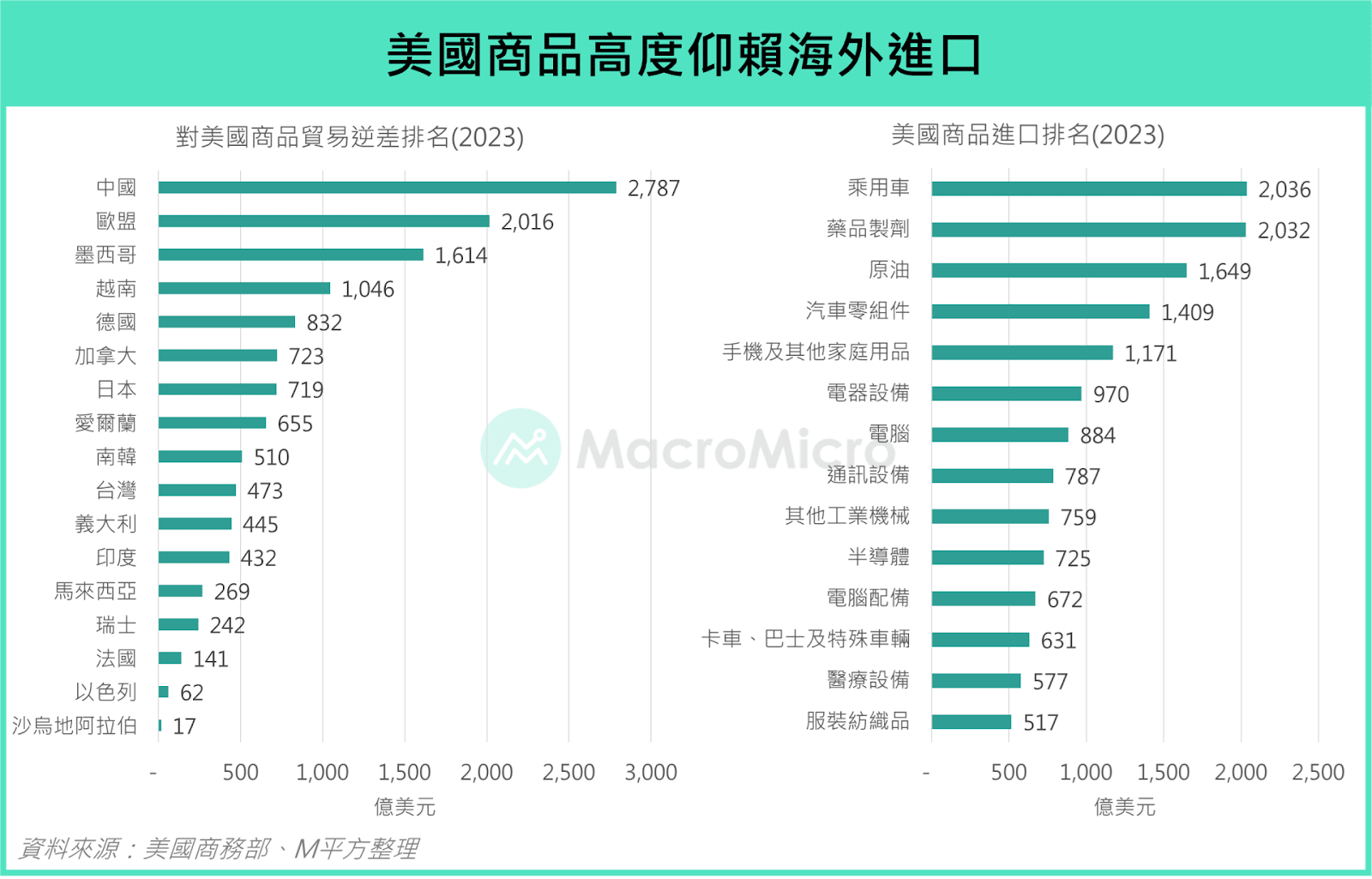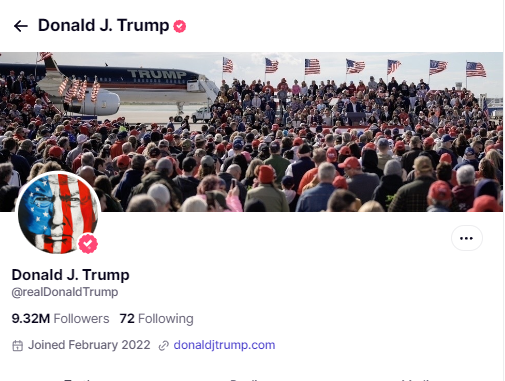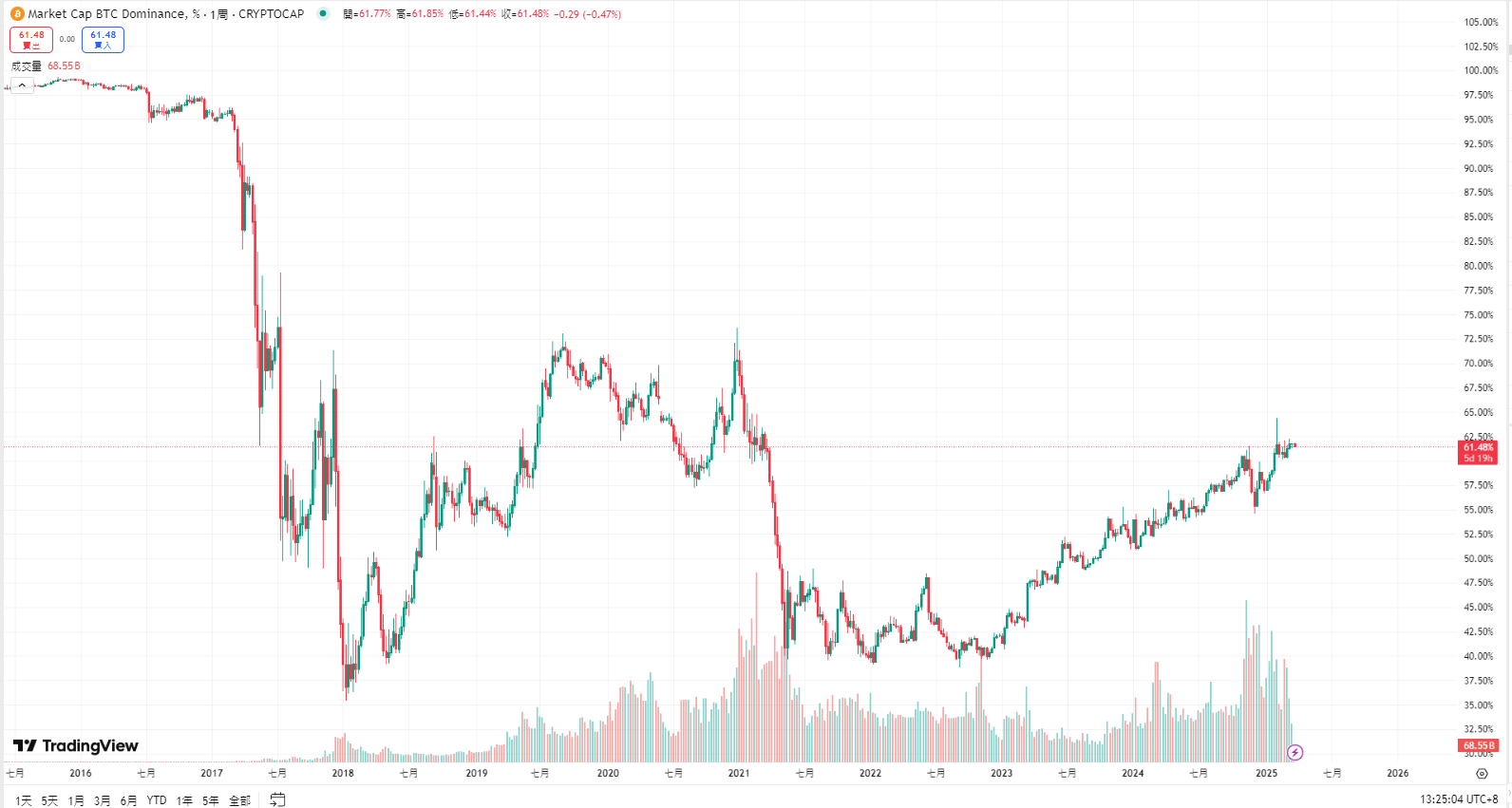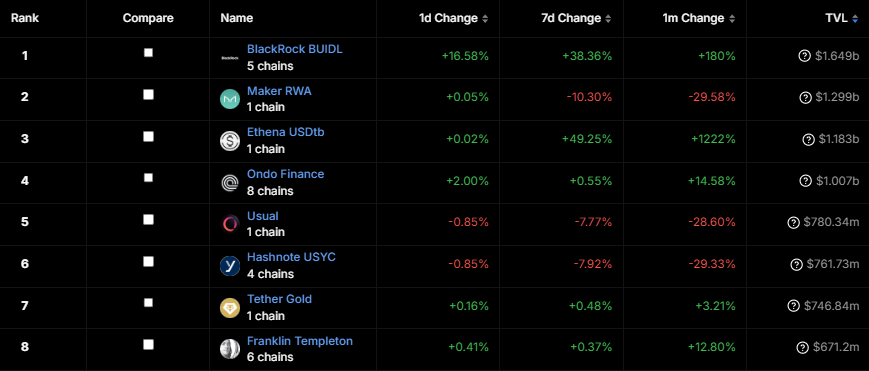A big opening: a "crypto coup" that rewrites the global financial order
When the declaration of "never sell Bitcoin" echoed under the dome of the White House on March 7, 2025, Wall Street gold traders suddenly realized that the financial scepter of the old world was being reborn on the blockchain. In just 60 days, the Trump administration used the "Crypto New Deal" as a scalpel to cut the blood vessels of the traditional financial system: 200,000 Bitcoins were injected into the national strategic reserve, more than 700 SEC regulators collectively left, and the president pardoned the keys of the Dark Web gangsters and the conspiracy of gold to replace BTC was promoted simultaneously. The introduction of various policies not only allowed Bitcoin to stand above 80,000 US dollars for more than 4 months, but also tore the genes of the US dollar hegemony system at a deep level - when the US Treasury Department included "digital gold" in its balance sheet, was it the end of the traditional legal currency system, or the beginning of a more secretive rule of capital power?
At the same time, the bubble of the on-chain meme carnival was completely disillusioned in early 2025 , and the living space of retail investors has been swallowed up by institutions. At this moment, put aside your fantasy of ten times the on-chain in one day, follow us to review the past period, and find a track that can make you a stable income in the rest of the year.
Trump’s Crypto Revolution: Policy Timeline and Market Restructuring
Since Trump began his second presidential term on January 20, 2025, the U.S. cryptocurrency industry has undergone an unprecedented institutional change. From the reshaping of the regulatory framework to the establishment of a national strategic reserve, from judicial pardons to global financial games, the Trump administration has promoted the integration of cryptocurrency into the core of the U.S. economy with radical activism.
Phase 1: Reshaping the regulatory framework (January-February 2025)
January 20: SEC leadership changes
Trump fulfilled his campaign promise and fired former SEC Chairman Gary Gensler on his first day in office, appointing former SEC Commissioner and Patomak Global Partners CEO Paul Atkins as acting chairman. Atkins is known for advocating "regulatory certainty over enforcement", and his appointment marks the SEC's shift from "enforcement-led" to "rule-making" mode.
January 23: Signing of the Executive Order on Strengthening Digital Financial Leadership
Trump signed the first encryption-specific executive order, the core measures include:
- Establish a presidential digital asset market working group to study federal regulation of stablecoins
- Explicitly prohibit the issuance of central bank digital currencies (CBDCs)
- Asked the Ministry of Finance to evaluate the possibility of including cryptocurrencies in foreign exchange intervention tools
January 24: Revocation of SAB 121 accounting policy
The SEC announced the abolition of the controversial policy SAB 121, which had forced custodians to list customer crypto assets as liabilities on their balance sheets. After the abolition of the policy, traditional financial institutions such as JPMorgan Chase and Goldman Sachs immediately launched crypto custody services, and it is expected that by Q2 2025, more than $200 billion of institutional funds will enter the market through banking channels.
January 22-28: Judicial pardons and personnel arrangements
- Silk Road founder Ross Ulbricht pardoned, ending his 11-year prison sentence
- Appointed Republican Mark Uyeda as acting SEC chairman, former CFTC commissioner Brian Quintenz takes over Commodity Futures Trading Commission
- Treasury appoints crypto-friendly Scott Bessent as minister, who publicly views Bitcoin as a “digital gold reserve”
February 27: SEC withdraws class action lawsuit
The SEC terminated its investigation into the Gemini Trust platform and dropped the related lawsuit. Prior to this, the SEC had withdrawn its lawsuit against Coinbase and terminated its investigations into OpenSea, Robinhood, and Uniswap. In the seventh week of Trump's inauguration (March 3-March 9), the SEC agreed to drop the lawsuit against Kraken without paying a fine or admitting any violations, and Kraken's business model was not affected.
Phase 2: Strategic reserve establishment and global competition (March 2025)
March 1: Announcement of five major crypto strategic reserves
Trump announced five major crypto strategic reserve categories on social media platforms. The US cryptocurrency strategic reserve will include BTC, ETH, XRP, SOL, and ADA. The inclusion of ADA has caused controversy and has been dubbed "advertising space" by some market participants. However, on March 7, David Sacks, the king of artificial intelligence and cryptocurrency, said that ADA, SOL, and XRP were mentioned because they are the top five cryptocurrencies in terms of market value.
March 6: Signing of the Strategic Bitcoin Reserve Executive Order
Trump officially established the Federal Bitcoin Reserve, and the core mechanisms include:
- Initial reserve: 200,000 BTC
- Funding comes from criminal/civil forfeiture assets and is committed to the principle of "budget neutrality"
- Prohibits the government from selling existing holdings
March 7: White House Digital Asset Summit
President Trump delivered a brief speech at the summit. He said, "Last year, I promised to make the United States the global Bitcoin superpower and the world's crypto capital. We are taking historic action to fulfill this promise, and suggested: "From today, the United States will follow the rule that every Bitcoin holder knows well - never sell your Bitcoin. "
- Ending Biden’s Regulatory Strangulation 2.0
- Promote congressional legislation to establish a stablecoin regulatory framework
- Establishing a cross-border digital currency clearing mechanism with the intention of leading the global encrypted payment standards
During the summit, the SEC simultaneously released the "Guidelines for the Supervision of Digital Asset Trading Platforms", expanding the definition of "exchange" to automated market makers (AMMs), paving the way for the compliance of DeFi platforms such as Uniswap.
March 11: Re-evaluation of exchange proposals
The SEC is evaluating a proposal to redefine “exchange” that could provide clearer guidance on the regulatory framework for crypto trading platforms in the United States.
Meanwhile, the U.S. House of Representatives passed a resolution to overturn the IRS's broker rules for decentralized finance (DeFi) platforms. The rules require crypto entities to collect specific taxpayer and transaction information, which is difficult for DeFi platforms to enforce. Previously, the U.S. Senate had voted to pass the resolution, but due to budget rules, it still needs to vote again before it can be sent to President Trump for signature.
March 12: Bitcoin bill resubmitted
On March 12, U.S. Senator Cynthia Lummis has resubmitted the Bitcoin Act (Boosting Innovation, Technology, and Competitiveness through Optimized Investment Nationwide Act of 2025) to the 119th Congress, which will allow the U.S. government to hold more than 1 million bitcoins. The bill was originally proposed in July 2024, requiring the U.S. government to purchase 200,000 bitcoins per year for five years, with funds coming from adjustments to existing funds from the Federal Reserve and the Treasury Department. After this revision, the U.S. government can hold additional bitcoins through legal means (including civil or criminal forfeiture, donations, or transfers by federal agencies).
March 21: Discussion on gold reserve replacement
Robert Hines, executive director of the Presidential Digital Asset Advisory Committee, revealed that the possibility of selling part of the gold reserves in Fort Knox in exchange for Bitcoin is being evaluated. According to China Economic Data, the United States currently holds 287 million ounces of gold reserves. If implemented, based on the current gold price ($3,020/ounce) and Bitcoin price ($87,200), a 1% gold reserve replacement can increase holdings by about 100,000 BTC.
March 23: Pushing for the GENIUS Act
The White House is actively pushing the GENIUS Act to enter the Senate for deliberation as soon as possible, and strives to be signed into law by President Trump within two months. The bill passed the Senate Banking Committee by 18 to 6 on March 13, and intends to establish a regulatory framework for payment stablecoins pegged to the US dollar. The House version of the STABLE Act will begin deliberation on April 2, and the White House hopes that the Senate version will gain enough support to push the House of Representatives to pass it directly and avoid the legislative negotiation process.
March 24: Trumpcoin marketing offensive
Trump posted on social media X: I love Trump. Although the token has fallen 80% from its peak, the president's endorsement still caused its 24-hour trading volume to surge 320% to $140 million.
March 25: Trump Media and Technology Group Plans to Launch ETFs
Trump Media & Technology Group (TMTG) announced that it has reached a preliminary cooperation intention with the crypto trading platform Crypto.com, and plans to jointly launch a series of ETFs and related products through its fintech brand Truth.Fi. It is expected to be officially launched in 2025, subject to the signing of a final agreement and regulatory approval.
Multiple Altcoin ETFs may be approved this year
As of March 25, the tokens that have applied for ETFs include at least DOGE, LTC, HEAR, SOL, XRP, SUI, AVAX, DOT, LINK, ADA, APT, AXL, etc. According to Bloomberg analysts James Seyffart and Eric Balchunas statistics show that the market currently has a relatively high probability of approving LTC, DOGE, SOL and XRP spot ETFs. The market's expectations for other mainstream crypto asset ETFs to be launched in the U.S. capital market have increased significantly. If the U.S. launches an Altcoin ETF, it may directly lead to other countries and regions in the world following suit. Bloomberg analysts expect the SEC to make a decision on the proposed Altcoin ETF in October this year.
Trump's "tariff-rate cut" two-pronged game and the underlying logic of U.S. political infighting
While we are discussing what crypto-related events Trump has done since taking office, the political and economic landscape of the United States is also undergoing dramatic changes: on the one hand, the Trump administration's tariff policy on China has repeatedly swung between "imposition-exemption-withdrawal", and on the other hand, it has continued to pressure the Federal Reserve to cut interest rates to hedge against inflation risks. This seemingly contradictory operation is actually a typical symptom of the decline of US hegemony - it is trying to restructure the global supply chain through tariffs to contain China, but it has to compromise with loose monetary policy due to domestic economic pressure. At the same time, the party disputes between the Republicans and the Democrats have evolved from policy differences to institutional confrontation. Trump has accelerated the "anti-establishment revolution" by pardoning political allies and reducing the size of federal agencies.
Instrumentalization of tariff policy: short-term political benefits and long-term strategic dilemmas

Analysis of the reasons for repeated tariff changes
Trump's softening of his stance before the "reciprocal tariffs" took effect on April 2 (such as reducing the EU auto tariff from 10% to 2.5%) is essentially using tariffs as a bargaining chip to achieve multiple goals:
- Election interest drive : The Republican Party needs to consolidate its advantage in the mid-term elections in 2025, and tariff adjustments are directly related to manufacturing votes in key states. For example, a 25% tariff on Japanese steel may cause its annual crude steel production to fall below 80 million tons. This move is intended to win support from Rust Belt states such as Pennsylvania.
- Industry chain reconstruction game: Despite the claim of promoting the return of manufacturing, the actual effect is questionable. In 2024, the proportion of manufacturing employment in the United States will be only 8.4%, lower than 8.7% in 2016, and the cost transfer of tariffs has caused the consumer price index (CPI) to rise by 2.7% year-on-year, highlighting the disconnect between policy and reality.
- International power redistribution : By threatening to impose a 25% tariff on importers of Venezuelan oil, Trump is trying to reshape the Latin American energy order and weaken the geopolitical influence of China and Russia.
Policy consequences and structural contradictions
The instrumentalization of tariffs has triggered a triple crisis:
- Loss of economic efficiency: JPMorgan Chase estimates that if "reciprocal tariffs" are fully implemented, the US GDP growth rate will drop by 0.8 percentage points; and the price paid by the UK to circumvent the adjustment of the digital service tax is as high as 800 million pounds, which shows the fragility of the global supply chain.
- Political credibility dissipated: Trump's "tariff diplomacy" has led to a decline in policy predictability. Jon Gray, president of Blackstone Group, pointed out that investors need to be wary of "knee-jerk reactions" and wait for the results of negotiations rather than making hasty decisions.
- International rules are collapsing : Italian President Mattarella criticized US tariffs for "distorting market competition"2, while the WTO dispute settlement mechanism is on the verge of paralysis due to US obstruction, and the global trade system is accelerating fragmentation.
The underlying logic behind the pressure of interest rate cuts: inflation shifting and financial hegemony protection
The political economics of Trump's pressure for rate cuts
On the evening of March 19, the U.S. Federal Reserve announced that it would maintain the federal funds rate unchanged, which immediately aroused dissatisfaction from U.S. President Trump. He urged the Fed to cut interest rates, acknowledging that tariffs had an impact on the U.S. economy and required the Fed to "do the right thing."

Trump has posted on social media several times in the past month that the Federal Reserve would be better off cutting interest rates because the impact of U.S. tariffs is beginning to seep into the economy.
The motivation includes two dimensions:
- Debt cost control : The federal government's interest expenditure soared from $76 billion in 2024 to $86 billion in March 2025. If the interest rate range of 4.25%-4.5% is maintained, interest expenditure in fiscal year 2025 will account for 30% of the fiscal deficit, directly threatening Trump's infrastructure investment plan.
- Stock market stabilization needs : The Nasdaq index plummeted 7.2% in March 2025. Under the pressure of technology stock valuation correction, interest rate cuts have become a key tool to maintain asset bubbles. Bitcoin's safe-haven properties as "digital gold" have therefore been strengthened, showing a negative correlation with the trend of US stocks.
The Fed’s Independence Dilemma
On March 19, Fed Chairman Powell explicitly admitted that "more than 60% of the current core inflation rate of 2.7% is related to tariffs. This structural inflation forces the Fed into a dilemma:
- Monetary policy transmission failure: In the traditional interest rate hike cycle, companies can reduce imported inflation through supply chain diversification, but 38% of intermediate products in the United States are imported from China, and the 40% tariff directly pushes up the terminal price by 4-6 percentage points. The core PCE price index has risen to 2.8%. If the interest rate is cut too early, it may repeat the stagflation of the 1970s.
- Global monetary policy diverges : the European Central Bank maintains tightening, the safe-haven property of the Japanese yen is enhanced, and the unilateral easing of the US dollar will intensify exchange rate fluctuations. At the same time, the threat from the president - to reorganize the Federal Reserve has led to unprecedented pressure on the policy independence of the Federal Reserve.
Domestic political struggle: Republican polarization and the structural decline of the Democratic Party
Trump's "complete transformation" of the Republican Party
- Restructuring of power within the party: By revoking the security clearances of the Biden family and critics and supporting "Trumpists" to take office, the Republican establishment has been marginalized. According to a March 2025 poll, Trump's approval rating within the party reached 93%, far exceeding the 67% in 2016.
- Penetration of the administrative system: The Department of Government Efficiency (DOGE) laid off 19,000 civil servants and canceled $420 million in contracts within 40 days. Its “data-suppressing” model (such as AI screening for abnormal expenditures in the Ministry of Education) is essentially a Silicon Valley-style reconstruction of the bureaucracy.
- Weaponization of the Judiciary: The revocation of security clearances for legal opponents such as New York Attorney General James marks a new stage in the executive’s suppression of judicial power.
The Democratic Party’s dysfunctional dilemma
- Leadership vacuum: The influence of veterans such as Biden and Harris has declined, while California Governor Newsom's reputation has been damaged by the controversy over his policy on transgender athletes, and there is a lack of a unified strategy within the party.
- The voter base is collapsing: support among the traditional working class and ethnic minorities is declining. A CNN poll in March 2025 showed that the Democratic Party's support rate was only 29%, the lowest since 1992.
- Policy legitimacy crisis: The DEI (diversity, equality and inclusion) policy has been criticized for being "overly politically correct", and the expansion of LGBTQ rights has triggered a backlash among middle-class voters, exacerbating social divisions.
Social contradictions intensify: From the Tesla attack to the metaphor of the crypto revolution
The underlying causes of Tesla’s violent incidents

In March 2025, more than a dozen Tesla vandalism incidents occurred across the United States. On the surface, it was the public's dissatisfaction with Musk's politicization, but in fact it was the outbreak of multiple contradictions:
- Class antagonism becomes explicit: DOGE layoffs caused a sharp rise in the unemployment rate of federal employees, and the victims pointed the finger at the technology capital represented by Musk.
- Reconstruction of industrial interests: Traditional energy groups and auto unions secretly promote violence to resist the subversion of the oil industry chain by electric vehicles.
- Political symbol war: "Resistance" spray paint on Tesla charging stations reflects the far left's desperate resistance to the Trump-Musk alliance.
The political logic of loosening cryptocurrency regulation
As of March 25, 703 SEC employees had resigned, accounting for 12% of the total, of which 23% were laid off in the law enforcement department.
The newly established crypto task force is led by Hester Peirce, and its priorities include redefining the legal requirements of "investment contracts" and opening up a compliance path for token issuance. As the SEC has undergone important personnel changes, its policies tend to be more friendly to cryptocurrencies. This marks a fundamental shift in regulatory philosophy:
- Capital compliance needs: Bitcoin ETF fund inflows have rebounded, and institutional investors need policy certainty to reduce compliance costs.
- Technological nationalism: A new form of maintaining the hegemony of the US dollar by supporting the crypto industry to counter China's digital RMB.
- Election funding secret channel: The anonymity of cryptocurrency may become a new channel for political donations, and both parties are vying for the right to speak in the industry.
The demise of cyclical logic and the reconstruction of market structure: from retail investor carnival to institutional monopoly
At the beginning of 2025, the cryptocurrency market officially entered the "post-cycle era", and the failure of traditional narrative frameworks (such as the four-year halving cycle and Meme coin rotation) revealed the qualitative change of the underlying logic.

Bitcoin's market share has remained above 60% for more than three months
Data shows that the Bitcoin spot ETF has attracted more than US$180 billion in funds since it was approved in 2024, but 92% of the funds flowed into BTC, which directly led to the depletion of liquidity in the "altcoin season" - the average daily trading volume of the top 50 Altcoin fell 63% year-on-year, and the market value share shrank to 37%.
This structural change heralds the full arrival of the era of "institutional pricing power":
Bitcoin’s status as a “super-sovereign asset” is strengthened
Asset management giants such as BlackRock have achieved the "disguised nationalization" of Bitcoin through ETFs, and the number of BTC they hold has accounted for 8.3% of the circulation, far exceeding the total reserves of sovereign countries such as El Salvador. The "Bitcoin Strategic Reserve" plan promoted by the Trump administration further ties BTC to the hegemony of the US dollar - the market value of BTC held by the US Treasury Department has exceeded US$50 billion, making it the world's largest single currency holder. This double endorsement has made Bitcoin break away from the volatility paradigm of traditional encrypted assets and form a macro hedging triangle with gold and US bonds.
Institutional entry rewrites the risk pricing model
Goldman Sachs' quantitative analysis shows that the correlation between crypto assets and the Nasdaq index will drop to 0.21 in 2025, but the negative correlation with the U.S. Treasury yield curve will rise to 0.68. This shows that the crypto market has been deeply embedded in the risk pricing system of traditional finance, and institutions dominate price discovery through tools such as option combinations and basis trading, and the "technical analysis" and "community consensus" that retail investors rely on have failed.
Regulatory arbitrage drives capital migration
 The Trump administration's "regulatory sandbox" policy (such as the SEC's withdrawal of the lawsuit against Coinbase and the CFTC's relaxation of stablecoin rules) has attracted traditional financial institutions to accelerate their layout. Morgan Stanley, Bank of America and other institutions have introduced tokenized RWA assets such as government bonds and corporate bonds into the crypto ecosystem through the "compliant sidechain" model. In Q1 2025 alone, the scale of on-chain RWA surged 100% to US$10.6 billion, accounting for 12% of DeFi TVL. This "regulatory-friendly" innovation is reshaping the global capital flow pattern.
The Trump administration's "regulatory sandbox" policy (such as the SEC's withdrawal of the lawsuit against Coinbase and the CFTC's relaxation of stablecoin rules) has attracted traditional financial institutions to accelerate their layout. Morgan Stanley, Bank of America and other institutions have introduced tokenized RWA assets such as government bonds and corporate bonds into the crypto ecosystem through the "compliant sidechain" model. In Q1 2025 alone, the scale of on-chain RWA surged 100% to US$10.6 billion, accounting for 12% of DeFi TVL. This "regulatory-friendly" innovation is reshaping the global capital flow pattern.
Track differentiation: from bubble carnival to value precipitation

Driven by both policies and technologies, market funds are showing a significant shift from virtual to real.
CoinGecko data shows that the total market value of Meme coins fell from US$150 billion in Q1 2025 to the current US$56 billion, a drop of more than 62%.
However, funds in the RWA, DeFi and stablecoin sectors continue to flow in positively.
Although there has been a wave of meme hype in the BNB ecosystem recently, it can be found that the popularity is far less than at the beginning and end of last year.
The withdrawal of institutional funds has put Meme Coin into a vicious cycle of "low market value - low liquidity - high volatility - capital flight". Excessive commercialization such as celebrities issuing coins and presidents issuing coins has led to the alienation of the subcultural attributes of Meme Coin.
Behind this differentiation is a fundamental shift in the logic of value creation. Overall, the most valuable investment tracks for the rest of 2025 are as follows:
RWA: The on-chain migration of trillions of dollars of traditional assets
Regulatory breakthrough: The US GENIUS Act establishes the "payment tool" attribute of stablecoins, allows banks and technology companies to jointly issue them, and grants tax breaks for tokenized assets. The on-chain Treasury bond fund BUIDL launched by BlackRock has exceeded US$1.6 billion in size, with an annualized return of 4.3%, far exceeding traditional money market funds.
Model innovation: MakerDAO's "Phoenix Plan" includes commercial real estate and supply chain financial assets in the collateral pool, and the proportion of RWA in DAI issuance has risen to 63%, pushing stablecoins from "transaction medium" to "interest-bearing assets". The Hong Kong Monetary Authority and Ant Digits launched a $5 billion "digital gold tokenization" project to open up the liquidity channel between precious metals and DeFi.
Geopolitical game: Russia announced that it would include BTC in the National Welfare Fund. China penetrated the ASEAN market through the digital RMB cross-border settlement system. RWA became a new battlefield for major powers to compete for asset pricing power.
Ethereum Pectra Upgrade and DeFi 3.0 Revolution: Infrastructure Reconstruction and Ecological Paradigm Migration
Pectra Upgrade: Ethereum Becomes the Cornerstone of DeFi Compliance Infrastructure
The Ethereum Pectra upgrade is not only a technological iteration, but also a key step in building a standardized financial infrastructure for DeFi 3.0. Through three core breakthroughs in account abstraction, data efficiency, and validator flexibility, it promotes DeFi's transition from "protocol layer innovation" to "full-stack financial operating system."
Upgrade of staking mechanism: may promote staking of Ethereum ETF
Super Validator (EIP-7251): The upper limit of a single validator’s staking is increased from 32 ETH to 2048 ETH, pushing the proportion of institutional-level liquidity pools (such as Coinbase Institutional Staking) to 41%, and the annualized return volatility is reduced to 3.2%.
Instant Exit Channel (EIP-7002): Stakers can trigger exits directly through the execution layer contract, shortening the redemption cycle from 15 days to 3 hours, and accelerating the flow of released liquidity into DeFi interest-bearing protocols (such as Lido and Rocket Pool).
Stablecoins: From payment tools to monetary policy testing grounds
Disruption of the landscape: Tether accepts monthly audits from the Big Four accounting firms, and the increased transparency of its reserves has pushed the USDT market value to over $180 billion; and Ethena (ENA) has rapidly grown USDe through a mechanism that generates income through staking ETH.
Geo-tools: The Trump administration plans to issue a "digital dollar stablecoin" to compete with the RMB and euro stablecoins for a market share in cross-border payments. The SWIFT system has processed an average of $12 billion in crypto-stablecoin transactions per day.
The dusk of the old order and the dawn of uncertainty
The policy reversals during the Trump era are essentially a total outbreak of the inherent contradictions of capitalism: the conflict between financial capital and industrial capital, the imbalance in the distribution of globalization dividends, and the crisis of institutional legitimacy are intertwined. From tariff games to the crypto revolution, from DOGE reform to street violence, the United States is reshaping the global order in a "creative destruction" way.
However, this strategy driven by short-term political interests may accelerate the collapse of its hegemonic system.
For market participants, Bitcoin's volatility is not only a reflection of price signals, but also a code book for interpreting changes in the political and economic situation in the United States.
The current cryptocurrency industry has shifted from "wild west development" to "civilized system building". In this era where institutions are reshaping rules, regulators are redefining boundaries, and technology is reconstructing scenarios, the survival strategy of retail investors needs to evolve in three ways:
Cognitive evolution: From exploring alpha value to chasing beta volatility, focusing on structured opportunities such as RWA income certificates and DeFi interest rate arbitrage;
Tool evolution: Master new tools such as compliant derivatives and on-chain treasury bond funds to achieve institutional upgrades of hedging strategies;
Positioning evolution: Transform from a "price discoverer" to a "liquidity service provider", capturing the intrinsic value of the protocol through market making, staking and other behaviors.
Only by understanding the underlying logic of this change can we seize the initiative in rebuilding order.






